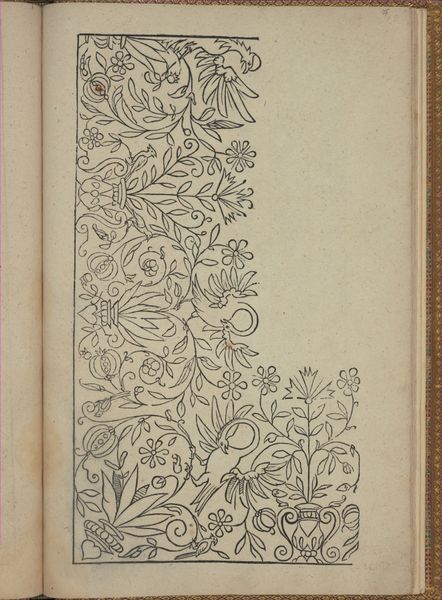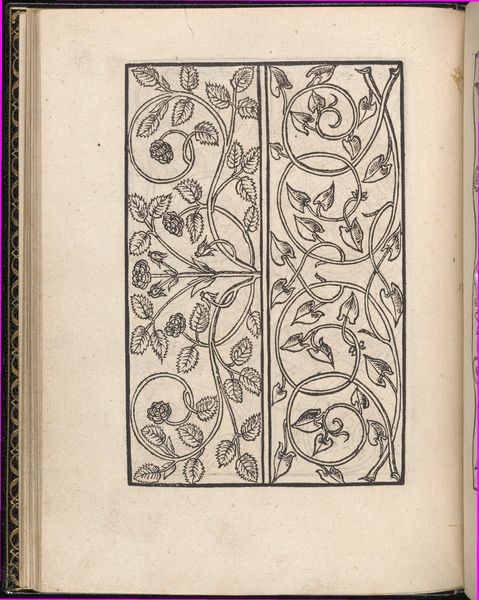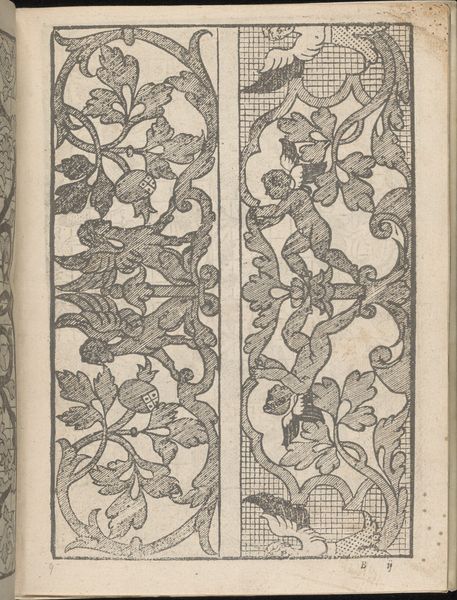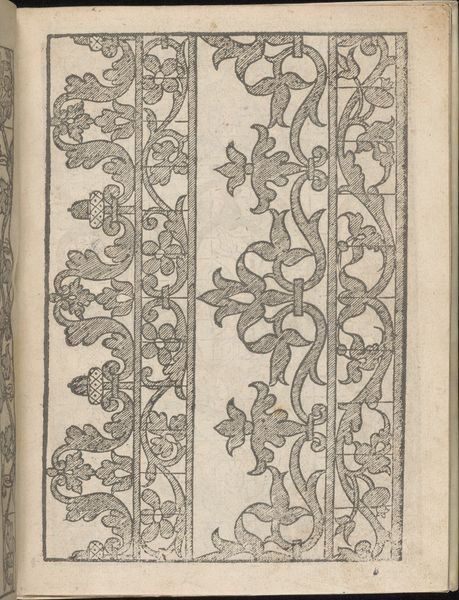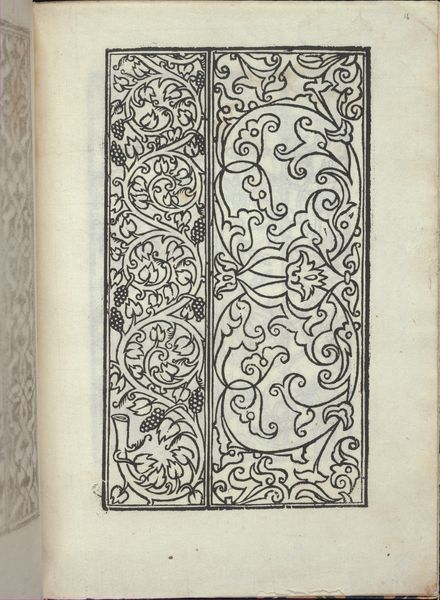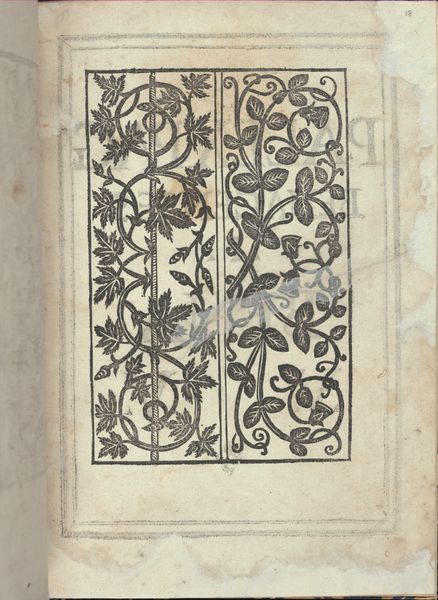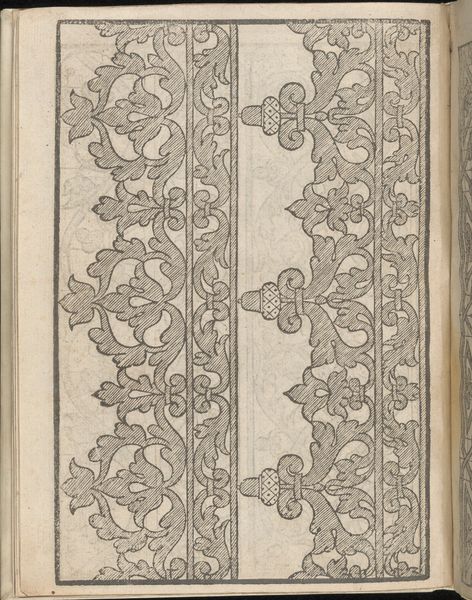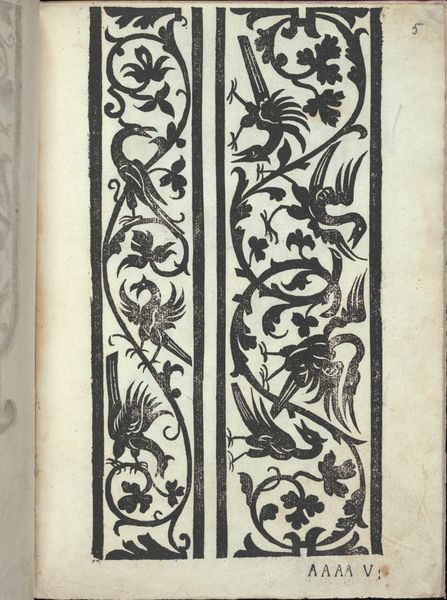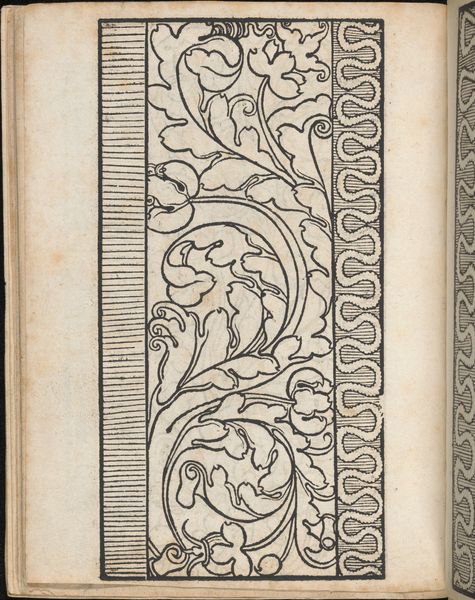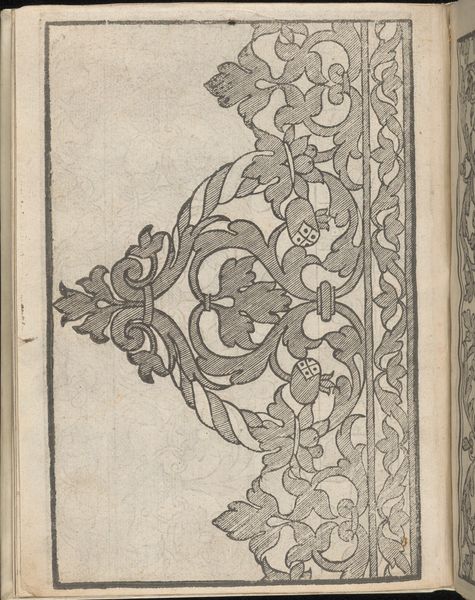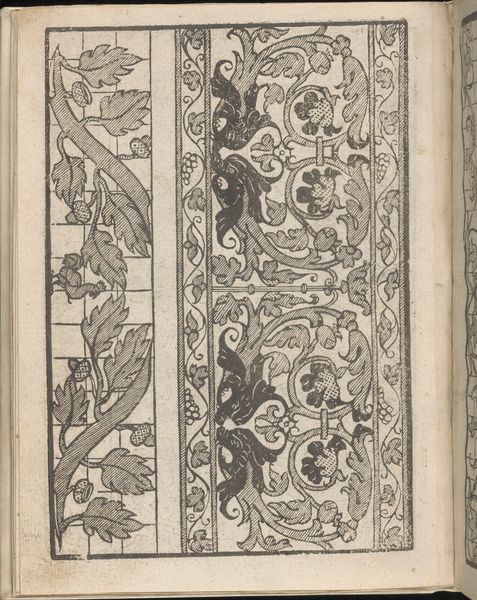
Libro quarto. De rechami per elquale se impara in diuersi modi lordine e il modo de recamare...Opera noua, page 17 (recto) 1532
0:00
0:00
drawing, print, paper, ink, woodcut
#
drawing
# print
#
paper
#
11_renaissance
#
ink
#
geometric
#
woodcut
#
line
#
decorative-art
Dimensions: Overall: 8 3/8 x 5 7/8 x 3/16 in. (21.2 x 14.9 x 0.5 cm)
Copyright: Public Domain
Alessandro Paganino created this woodcut on page 17 of "Libro quarto" in Venice, sometime in the first half of the 16th century. The image shows a series of embroidery patterns that would have been used in the making of textiles for domestic use or to adorn clothing. These designs provide insight into the visual culture of the Italian Renaissance, the era in which the modern museum was invented. They also reveal the social hierarchies of the time; the elaborate embroidery that these patterns would have produced was a status symbol, demonstrating wealth and refinement. Moreover, while men designed these patterns, it was typically women who executed the needlework, showing the gendered division of labor. Historical sources like pattern books and household inventories help us to reconstruct the economic and social contexts in which these designs were produced, consumed, and circulated. By examining the material culture of the past, we gain a deeper understanding of the values and beliefs of the societies that created them.
Comments
No comments
Be the first to comment and join the conversation on the ultimate creative platform.
